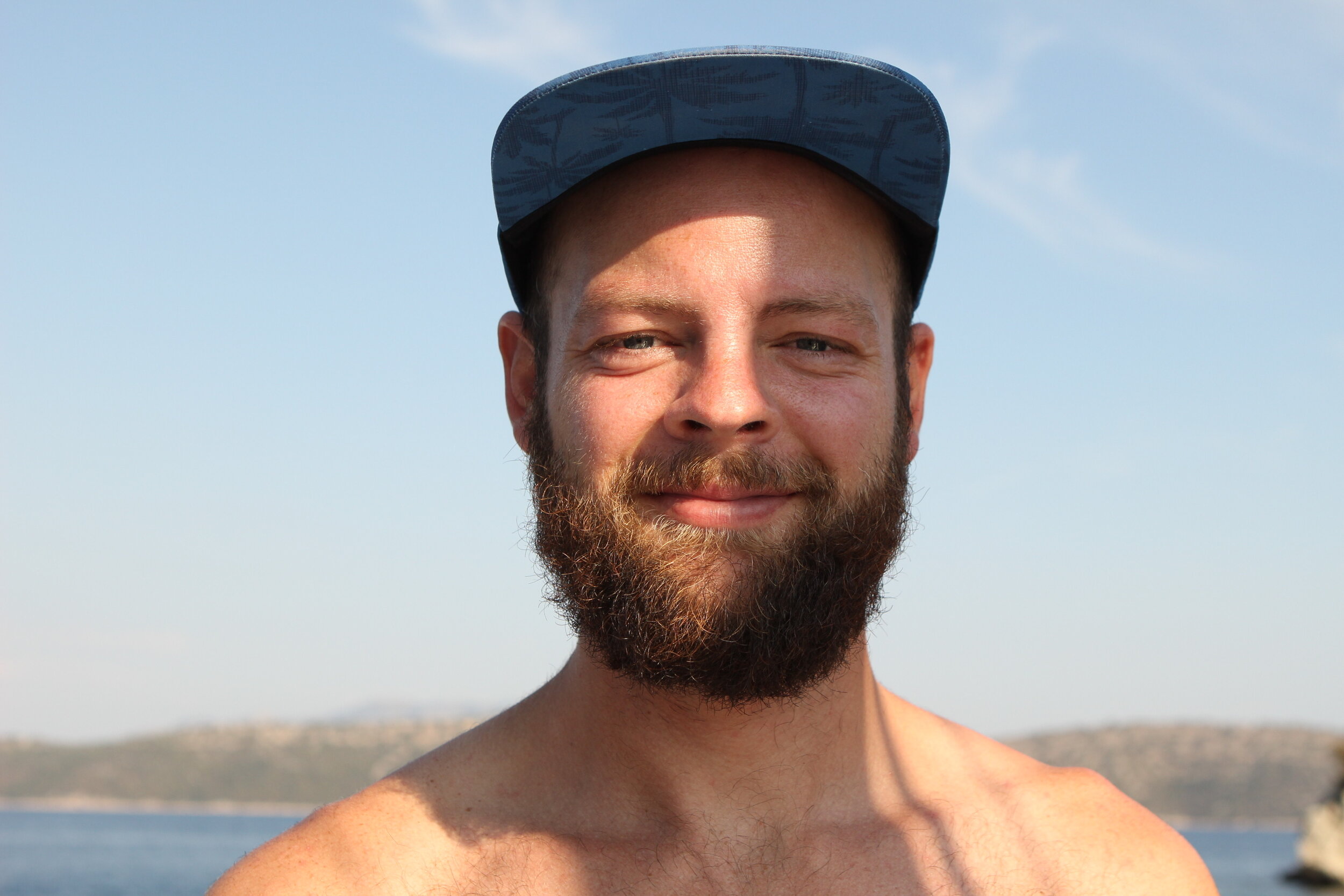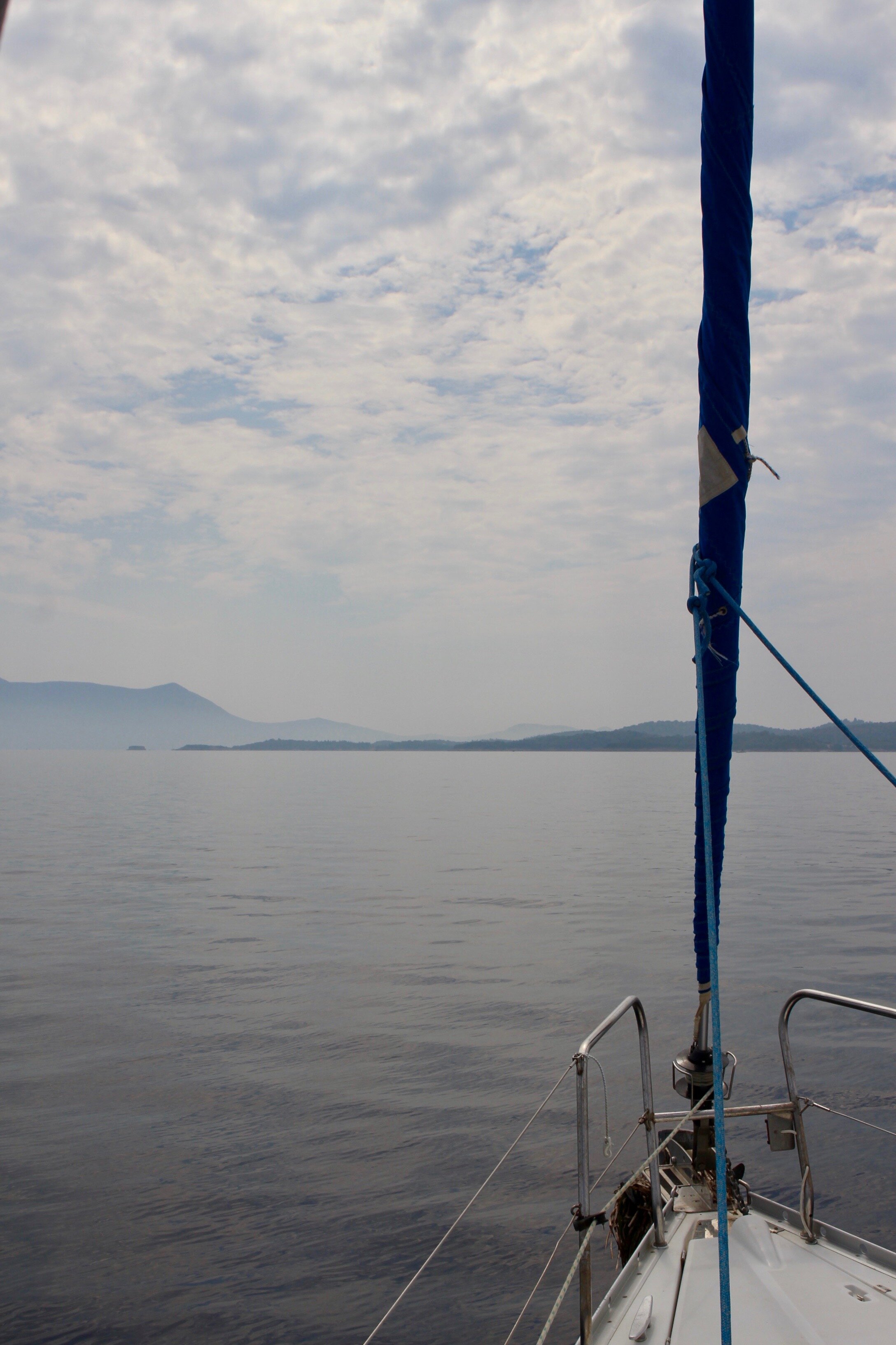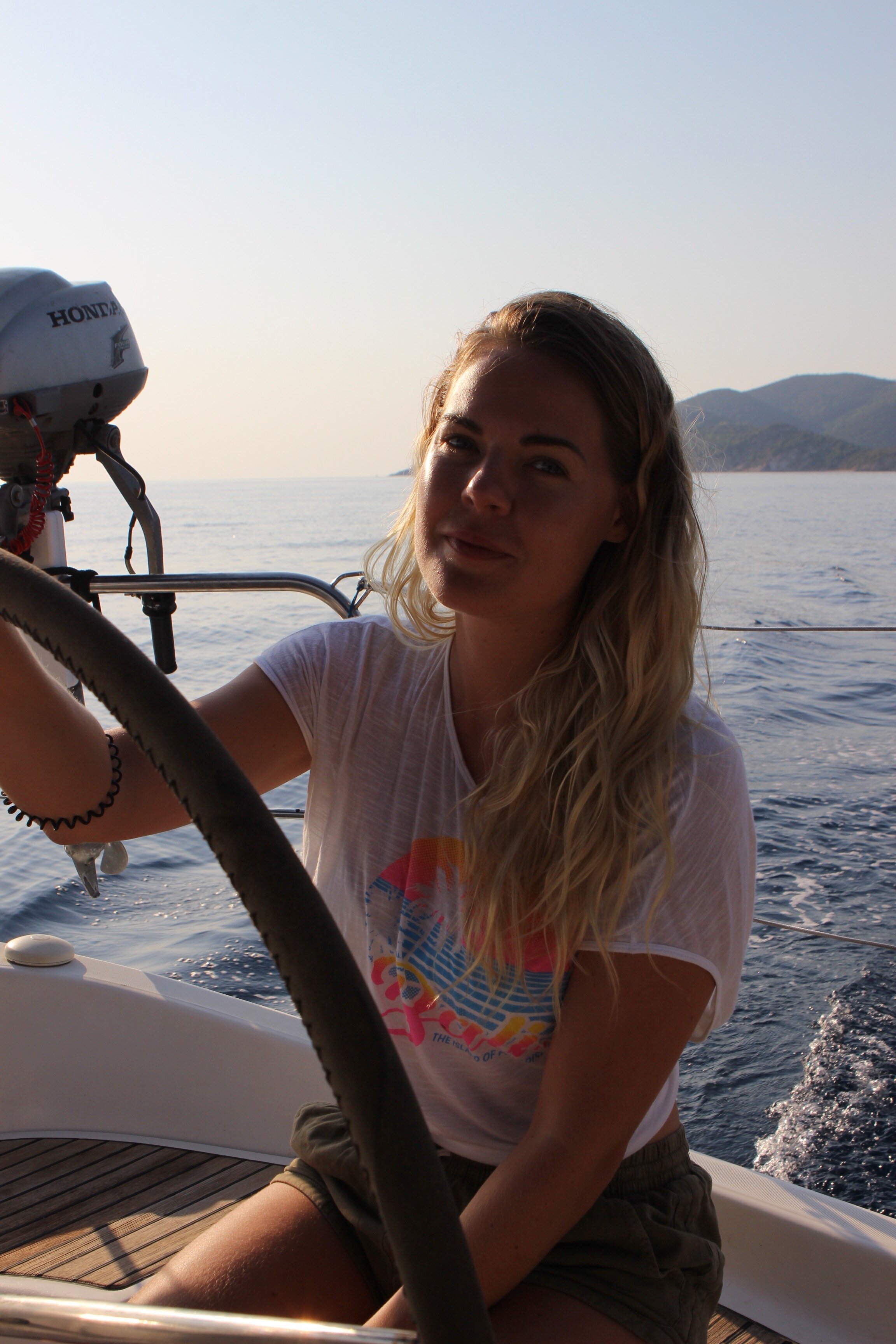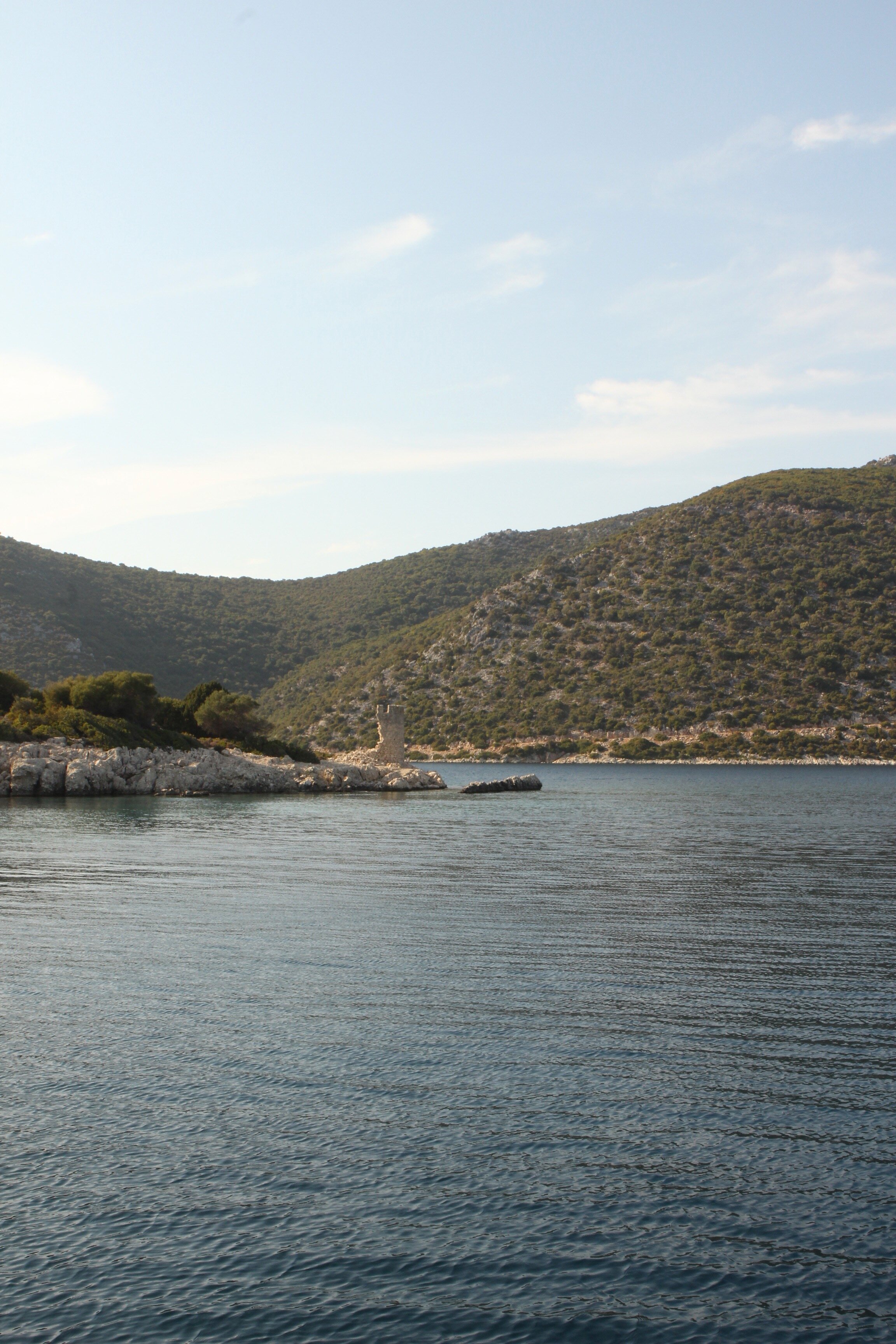SAILING THE GREEK ISLANDS: THE SOUTH IONIAN
HOME OF GODS & HEROES
THE ISLANDS OF THE SOUTH IONIAN
“We’ll head North around Skorpios, and then on to Meganisi” - Henry, our moustached skipper from New Zealand traces the route on the auto-helm, tapping the screen on shallow shoals to avoid and steep channels to navigate. We’d set off early from the quays of Nydri for a week of island hopping in the South Ionian. Seven days of sailing between quiet coves and quayside tavernas when the wind allows. Motoring in straight lines when dusty heads from too much Mextaca doesn’t.
“Skorpios?” I stare closer at the navigation. Are we in a James Bond movie? That cannot be the name of a real island.
It is. But Bond isn’t the right hero here. The archipelago we are sailing around is that of Odysseus and Achilles, Agamemnon and Ajax. The favourites of the gods, heroes of antiquity. Scorpios itself is a rise of twisted olive trees, carpets of crispy Cyprus needles, and creamy salt washed pebbles; the perennial attributes that characterise the islands of the Ionian. This part of the world just feels old.
Greek settlers arrived around the turn of 1000 BC and it is thought by some that Homer was born around 200 years later on Ithaca, home of Odysseus, the hero of his epic poem. More recently, Louis de Bernières’ 1994 novel Captain Corelli’s Mandolin bought renown to neighbouring Kefalonia, and of course Zakynthos (or Zante) and Corfu have their own fame; their reputations waxing and waning between heady-teen party islands and provincial mediterranean getaways. But unlike the more glamorous islands of the Saronics (super yachts aplenty), or famed spots in the Sporades (the film location of Mamma Mia), the islands of the South Ionian still boast a rustic charm. Sitting off the west coast of Greece, their mountainous interiors are more heavily forested, a darker green against the classic mediterranean azure. Their buildings a dusty gold instead of dazzling white.
As our ancient heroes did, the best way to explore the Islands is by boat. The best way to truly experience the islands is by belly. And so our trip is defined: history, harbours and hot saganaki.
Meganisi
After an hour crossing the channel between Nydri and Meganisi Island we shelter in a cove punctuated with bright cyan shallows and drift around our anchor. We have optimistic ambitions about an athletic morning swim: “20 minutes non-stop will feel good”… floating on my back staring at hazy blue space feels infinitely better.
As with anywhere in the Mediterranean, it pays to take advantage of the drowsy energy that goes with the shoulders of the high season. Late spring and later summer adds a layer of tranquility difficult to find in the blaze of July & August. Travel here in September and that also means gin-clear water, balmy from months of uninterrupted sun, and piles of ripening figs best eaten soaked in Greek honey. These we’ve bought by the carton for breakfast along with fresh coffee. In a stroke of genius Henry packed a moka pot (the fact he knew to bring this somehow better proof of his sailing experience than an actual qualification), and the smell of espresso & promise of sticky fruit tempts us back on-board. Land of the heroes, food of the gods.
Little Vathi
That evening we head into a small port colloquially known as Little Vathi (to differentiate it from Big Vathi on Ithaka). Summer yachts crowd the harbour and yet as we meander along the quay, the village seems immune to tourist frenzy. We see the occasional group clustered over cold beers and chilled red wine, but the principle activity appears to be dozing in the tail of the sun, or else lazily turning pages, heads against hands, hats brought low.
Grown up from a classic Greek fishing harbour, the cluster of pastel painted buildings now include several tavernas, their awnings dripping with bougainvillea. We opt for one of the originals, “The Rose Garden”, owned by the Palmos family. Their daughter Effi serves us charcoal grilled fish topped with hot butter, roasted stuffed tomatoes, and generous bowls of thick, wild-garlic tsatsiki. This is the type of cuisine you can eat over several hours, which of course we do. The bread basket and carafe refilled in equal measure and not infrequently.
We navigate back to the boat by moonlight and make our beds on deck, sunburned and salty, staring up at an inky sky.
“There is a time for many words, and there is also a time for sleep.”
― Homer, The Odyssey
Ithaca
The next morning dawns gold and soft. The water is glass. More coffee is brewed and greek yoghurt dolled out by the ladle, topped with slightly over-ripe nectarines; wrinkly skins & messy slices. Then we are first to leave port, heading out into an empty sea.
Today we are seeking the South Ionian’s most iconic island, the source of it all: Ithaca.
I have learned nearly everything I know about Greek history from novels. Where my husband earnestly studied ancient civilisations and anthropology at university, I was more likely to be found on my stomach in our scrubby student garden, tearing through ‘Captain Corelli’s Mandolin’ or ‘Zorba the Greek’. ‘The Iliad’ came later in fits and starts, and more recently Madeline Miller’s gloriously feminist re-interpretations of Homer’s ‘Circe’ and heartbreaking ‘Song of Achilles’.
But to be here in the Ionian, where it all started, where the stories began, and the wars played out both ancient and modern, elicits a feeling that is almost physical. The weight of the heat, the quality of the light, and the salt haze of the mediterranean feels so stubborn as to have been here through it all. And nowhere is that more true than Ithaca.
We raft off several other yachts already harboured in the tiny port of Frikes, one of the picturesque villages in this part of the archipelago. We clamber over guard rails, around masts, and between our neighbours drying towels to reach solid ground and set off into dusty hills.
“And tell me this: I must be absolutely sure. This place I've reached, is it truly Ithaca?”
Homer, The Odyssey
In 2010, an archaeology team from the University of Ioannina unearthed the remains of an extensive three storey palace in the south of the Island. These ruins include a well which has been dated to around the 8th Century B.C., the same time Odysseus is believed to have ruled Ithaca. Some believe this tumble of bleached stone may once have been his home. Whilst many are sceptical, believing The Iliad and The Odyssey belong firmly in the realms of fiction, it is vastly more exciting to believe otherwise. Besides, the location, scale & even views from the site are said to fit those described in Homer’s epic “like a glove”.
We scale around the site, balancing down rocky steps that have smoothed into slaloms. But by early afternoon we are meandering in the full heat of the day and crave the movement of sea-air. These hills are crucibles, hot light bending into valleys from bare and bright slopes. Once back in the bay we buy spinach and ricotta pie from the local bakery before casting off from our neighbour.
Motoring out into the open feels a little like cheating when I think of the human power that would have propelled the ships of Odysseus; one hundred oarsman hinging against the water. We should at least sail. The gods agree. Almost as soon as we finish lunch a breeze nudges at our stern and the mediterranean tuts and sighs at us as we fiddle with ropes and tenders, our mast now clicking impatiently. The sails billow and snap as they curl out and the boat pitches and settles a comfortable twenty degrees over. I grip the rails and face into the wind.
“Heaven has appointed us dwellers on earth a time for all things.”
― Homer, The Odyssey
A week of golden light, golden skin, golden honey… golden fried cheese, appointed by the gods, who call this place home.












